Initiating dialogue on how to design a resilient Trans-European Nature Network
Photo credits Valerie Menelec
Reflections from NaturaConnect’s first Stakeholder Engagement Event
How can NaturaConnect help to design a coherent and resilient Trans European Nature Network in the context of the Member States Protected Area pledges?
This was the central question underpinning the first stakeholder engagement event organised by the Horizon Europe NaturaConnect project in Brussels on the 28th of February 2023.
The event gathered over 70 leading EU delegates, governmental representatives, academics as well as international and European conservation organizations to lay the foundation for a bold new vision for Europe’s nature protection.
The event was organised by EUROPARC Federation, who leads the overarching stakeholder engagement and capacity building strategy within the project. In his opening remarks, Neil McIntosh – representing EUROPARC Executive Director at the event – emphasised:
Today is about participation in order to build the dialogue necessary that will help protect and preserve biodiversity, by connecting areas, as well as nature and people.
Frank Vassen, representing DG Environment as well as the project’s Advisory Board, added some important contextual elements about the EU Biodiversity Strategy for 2030, the policy framework underpinning NaturaConnect:
We understand that we cannot continue business as usual. We need both to protect and to restore nature. Consequently, the two big chapters in the Strategy relate to protection and restoration. The protection targets are quite ambitious, as they seek to achieve 30% of protected area coverage (land and sea) across the EU by 2030, one third of which should become strictly protected. Achieving these target will require that additional areas become protected. Also, these targets are not simply about having Protected Areas on paper, it is equally important that they will all be properly managed by 2030.
Essentials of the project
Piero Visconti, NaturaConnect project coordinator (IIASA) and deputy coordinator Nestor Fernandez (iDiv/MLU) kicked off the event by outlining the expected outputs of the project which aim to address the challenges of designing a Trans-European Nature Network. These are not only about placement of new Protected Areas but also about their connection with one another. They also highlighted lack of stakeholder awareness and cooperation; insufficient knowledge with respect to biodiversity data; and access to existing funding mechanisms as some of the main currently known obstacles preventing the full implementation of the EU Nature Directives. It is these elements that are tackled through the NaturaConnect project. By providing technical support and data, tools and knowledge, NaturaConnect can support EU Member States in their planning and implementation of an ecologically representative and connected network of conserved areas, in line with the EU Biodiversity Strategy for 2030. This includes support to Member States in the revision of their protected area pledges in the context of the Strategy, and assistance to the European Commission with the evaluation of the first round of pledges.
Conversations
The event initiated informal conversations between participants representing various sectors including science, public administration, EU-policy makers and non-governmental organisations about enablers and barriers for implementing the EU Biodiversity Strategy for 2030, including the design and management of the TEN-N.
The participants engaged in small groups to identify the many different perspectives in the room, focused around the following questions:
- What are the enablers and barriers to achieving connected Protected Areas in Europe?
- What are we now collectively seeing in terms of enablers and barriers to achieving connected Protected Areas in Europe?
The discussions covered overall perspectives on nature conservation and how different views on nature hinder or encourage its protection. A common question was how nature conservation can become a priority among other land uses and resource needs. How can its value become more visible and valued by policy and decision makers? The discussions continued into both broader aspects, as well as more specific themes such as funding opportunities and the potential of payments for ecosystem services.
In the afternoon, participants built a “live agenda” by proposing topics themselves, which were triggered by the morning’s discussion and were of most relevance for them. The topics were discussed in small interactive groups and the outcomes included specific recommendations for the project.
The selected discussion topics from the groups included:
- funding opportunities,
- governance of connectivity,
- the importance of small areas or landscape features yielding very rare biodiversity and needing better protection,
- capacity building,
- reconciling the need to develop renewable energy systems with the need to build the TEN-N,
- identification of “areas of particular importance for biodiversity” in Europe,
- how science can have an impact – addressing the interface between science and policy,
- monitoring and assessing Protected Areas and corridor effectiveness,
- how an EU-wide process can be initiated to identify a coherent corridor network,
- how to scale up successes and guidance of processes and its format.
The conversations provided valuable perspectives on the various topics, for example,the importance of co-creation of knowledge and guidance for TEN-N together with those responsible for planning and implementation. The need for capacity building on the ground was highlighted, as well as the necessity for a long-term perspective on area-based conservation planning in Europe.
The event brought together a wide range of participants from different sectors and countries, creating dialogue on important aspects of the project. We are looking forward to further engaging with stakeholders on these topics, and supporting them in designing a resilient and well-connected Trans European Nature Network.
Did we catch your interest?
Do you wish to know more about the conversations?
Want to reach out to the project? Please do so and write to marit.schnepf@europarc.org or visit our website: www.naturaconnect.eu
The event was professionally moderated by Maria Scordialos and Linda Mitchell. The harvesting work for the event record was undertaken by Valerie Menelec.


NaturaConnect receives funding under the European Union’s Horizon Europe research and innovation programme under grant agreement number 101060429.
EUROPARC participates in a Council of Europe consultation on the Climate Crisis and Young People
EUROPARC is active in the Council of Europe in the fields of nature protection, climate change, human well-being and young people.
EUROPARC participates in a Council of Europe Consultation on the Climate Crisis and Young People
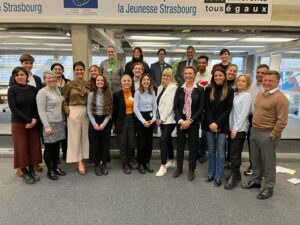
The youth consultation involved young climate activists, youth-led NGO representatives, academia and government representatives
The Council of Europe (CoE) is an International Organisation, which gathers almost all European Countries to promote Democracy, Human Rights, and the Rule of Law. The foreign ministers of all countries meet here to decide on recommendations, which are not legally binding, but they are encouraged to implement these nationally and they are reviewed every 5 years. EUROPARC’s Youth Officer, Jessica Micklem-Kolenic, was invited to participate in a consultative meeting for a recommentation on the 22 – 25 February 2023 in Strasbourg. This recommendation was on the Climate Crisis and Young People and was initiated by young people through the European Youth Department.
Meaningful Youth Participation in the Council of Europe
For over 50 years, the Council of Europe has been leading by example on praticing meaningful youth inclusion. All policies that are about young people, are co-drafted by youth and additionally, young experts are consulted for recommendations concerning them. This work is led by the Joint Council on Youth, which is a decision-making body with half the members from organised youth organisations such as European-wide youth-led NGOs, national youth committees and federations of youth political parties (Advisory Council on Youth or CCJ). The other half of this Joint Council are representatives from governments, specifically the ministries working on young people (European Steering Committee for Youth or CDEJ).
A Council of Europe Recommendation
The Youth Department organised an expert non-formal trainer, Anuschka Ruge, who facilitated the consultation for the recommendation on the Climate Crisis and Young People. Below you can see a visual she created to showcase the roadmap from the initiation phase to the implementation. Once an idea for a recommendation has been presented, approved and the drafting group has been set up, they have the choice to either research the issue to come up with the content and priorities, or to do a consultative meeting. For work with young people, consultative meetings are more worthwhile as the experiences of the youth change rapidly over time and are not often formalised into publications. For this consultation, the attendees were 20 youth climate activists, and representatives from youth organisations, committees and youth political groups, as well as a few academics and goverment representatives.
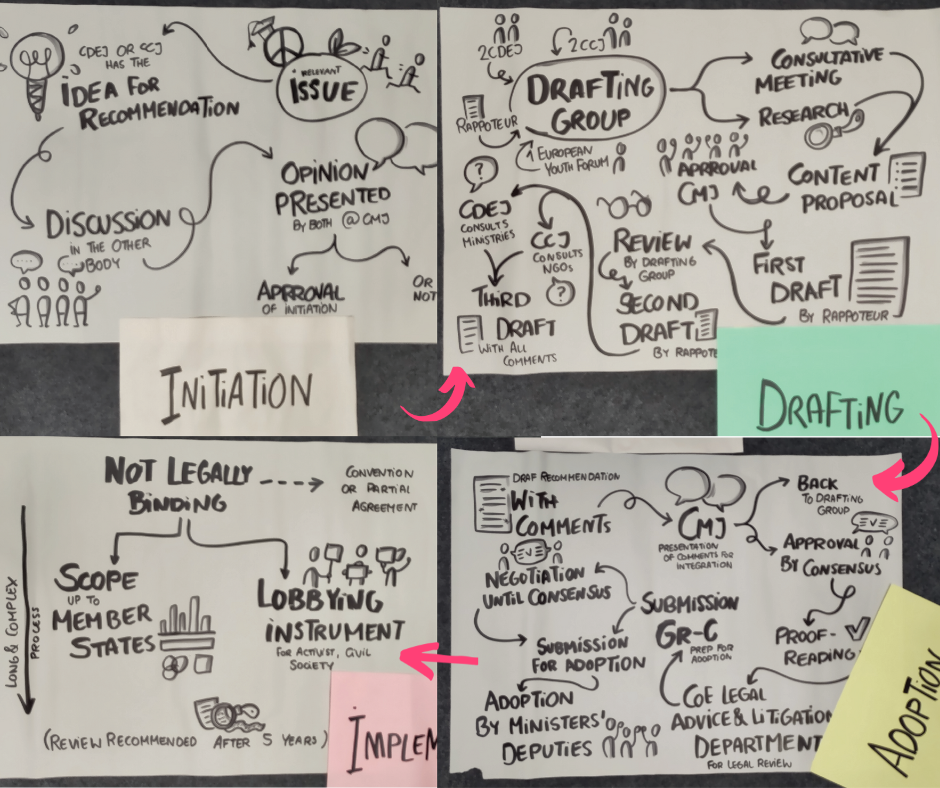
The process for a Council of Europe recommendation
All of this information was shared with the participants of the consultations within the first few hours, setting the scene for the work happening in the background of the Council of Europe. One of the strongest possible legal tools to combat climate change and biodiversity loss is the implementation of the Human Right to a clean, healthy and sustainable environment within the structure of the European Court of Human Rights. Representatives from this Court and the Council of Europe Steering Committee on Human Rights presented their work on the progress os this legal instrument. This information can be found in a previous EUROPARC news article.
The goal of the consultation, was to share experiences and perspectives as well as to prioritize about five points, which could be focused on in the recommendation. While many young people stressed tackling the root causes of the climate crisis, namely the unequal global economic system, the overuse of resources, and valuing economic growth above all else, the recommendations could only be within the mandate of the Council of Europe, namely concerning issues related to Democracy, Human Rights and the Rule of Law, not the economic system.
The Consultation with Young People
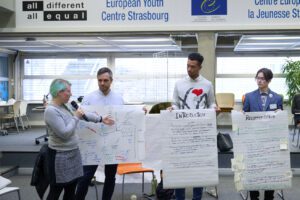
Sharing our ideas after two days of brainstorming
The first task was to dive into the four key priorities of the Youth Sector Strategy for 2023 and share challenges, barriers and opportunities:
- Revitalising a pluralistic democracy
- Access to rights
- Living together in peaceful and inclusive societies
- Youth work
Thereafter the participants ran through a series of brainstorming exercises from which they grouped together concepts and identified priorities. Some of the key points mentioned were:
- Accessible youth participation: including the voices of minorities and disadvantaged groups in democratic spaces
- How do we incentivise climate action: supporting the work on a Human Right to a clean, healthy and sustainable environment as well as changing the measures of success in our economies
- Addressing systemic drivers: implementing a youth-test for policies at all levels of governance to see their impact on young people now and in the future.
- Strengthening the link between climate justice and social justice: acknowledging that we need a socio-ecological transition and discarding language that polarises social issues and environmental issues (especially in funding proposals and budgets).
- Enforcement of previous agreements: respecting the rights of Indigenous Peoples, creating safeguards for environmental Human Rights defenders
- Just Transition: providing more incentives for green jobs in nature protection and climate action
The workshop culminated in a presentation of possible recommendations for the Secretary General of the Council of Europe, Marija Pejčinović Burić, and the Icelandic Foreign Affair Minister, Thórdís Kolbrún Reykfjörd Gylfadótti.
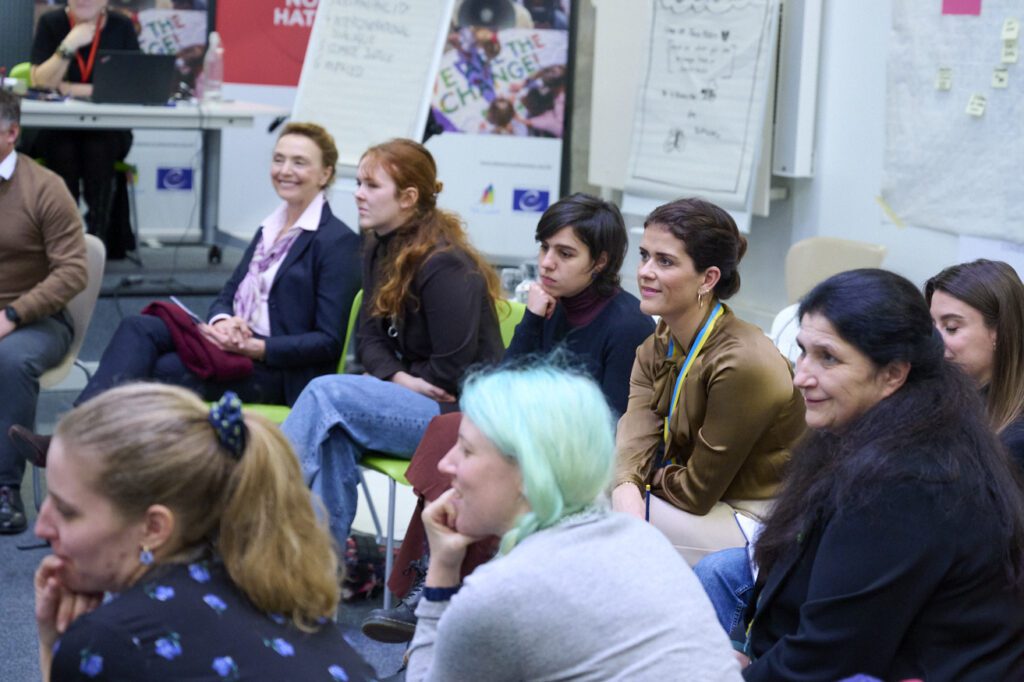
Sharing our ideas with the Icelandic Foreign Affairs minister as the current presidency of the Council of Europe
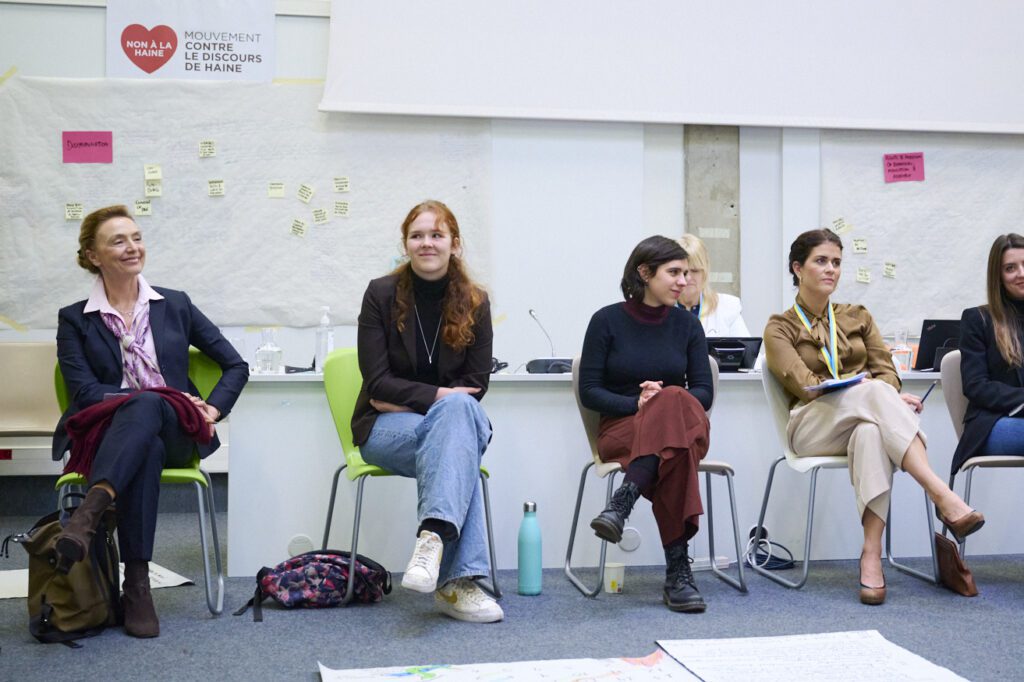
Meeting with the Secretary General (left) of the Council of Europe
The Council of Europe and the Human Right to a Clean, Healthy and Sustainable Environment
EUROPARC advocates for the implementation of the Human Right to a Clean, Healthy and Sustainable Environment and also the Rights of Nature. Below you can read an update of the progress incorporating this into the European legal system.
The Council of Europe and the Human Right to a Clean, Healthy and Sustainable Environment
The Council of Europe (CoE) is an international organisation of all European countries (EU and non-EU, but recently excluding Russia for obvious reasons) to promote democracy and inclusion, human rights, and the rule of law. EUROPARC is actively engaged in this space, advocating for the priorities of Protected Areas across all of Europe.
Last year we published an update on the progress in the United Nations space on acknowledging the right to a clean, healthy and sustainable environment as a human right. The follow up of this decision is for it to be incorporated into national and regional jurisdiction before it can be used as a tool to hold entities accountable for their environmental damage through actions or inactions. Within Europe, there are countries which have or are making progress to incorporate this human right into their constitutions or national law. During an event at the European Centre for Youth in Strasbourg, three speakers presented the progress on the legal aspects on implementing and enforcing the protection and conservation of nature including climate action at the regional level within the Council of Europe.
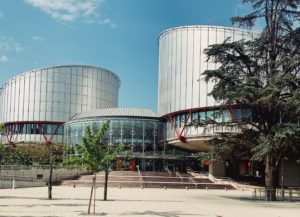
The European Court of Human Rights by Zsófia Vera
The first speaker was Nataliy Kobylarz, a senior lawyer at the Registry of the European Court of Human Rights (ECtHR) and a lecturer on European Human Rights. She presented the progress and challenges of implementing this human right into the ECtHR – which is an international legally binding court to which individuals can bring cases against one or more states.
While in Africa people are guaranteed the right to ‘a general satisfactory environment favourable to their development’ through the African Charter on Human and People’s Rights, and similarly the Inter-American Court of Human Rights recognises the protection of the right to a healthy environment through the American Convention on Human Rights, the European Court of Human Rights is still a few years from the same. This is because it only covers civil and political rights and not cultural and social rights (sometimes called second generation rights and are not enforced by the ECtHR but a smaller committee with less power) which is where the African and American courts drew their argument from.
Currently, to bring a case to the European Court of Human Rights, there has to be a clear event that creates a “victim”. Secondly there needs to be a clear argument that this case could not be solved at a national level. Of six recent cases brought to the ECtHR only three have not been dismissed because of these two previously mentioned conditions. The three that will be seen in court are:
- #Klimaseniorinnen: a group of >64 year olds who are taking Switzerland to court for not doing enough to prevent the heatwaves, which cause health problems in elderly women in particular. This case has been in the works for over 20 years already with more than 45 000 deaths attributed to heatwaves in Europe.
- Carême v. France: a case where a former lawyer is fighting for the “right to a normal private and family life”, which is at risk due to France’s inadequate climate action. Damien Carême, former mayor of the Commune of Grande Synthe in France, had previously had his case seen in the French Court but they dismissed the individual aspect of it and it has now been brought to the ECtHR.
- Duarte Agostinho and Others v. Portugal and 32 Other States: This is also known as the case of the six Portuguese children, which is based on the rights to life, to privacy (which includes mental and physical well-being) and the right not to experience discrimination. This case has been sent to the Grand Chamber.
The first two cases will be seen in the Grand Chamber on the 29th of March and the third is still unknown. All of these are based on previous human rights and having a clear recognition of the human right to a clean, healthy and sustainable environment would be a huge step forward to having environmental cases heard in the ECtHR.
Another legal tool is the Rights of Nature, which have been adopted in a few countries such as New Zealand, Ecuador and Pakistan. This would be a more eco-centric way of using the law to protect the environment than the human right, which always requires a human to be involved. The Rights of Nature would give legal personhood either to Mother Nature, to an ecosystem/feature (such as a river) and they would be represented in court by an ombudsman. However, in the current scope, it does not seem possible for the European Court of Human Rights to include the Rights of Nature into its procedures.
Secondly, David Milner, head of the Steering Committee for Human Rights (CDDH) at the Council of Europe, shared the work that has been done so far. In the 2021 manual, the latest edition from the CDDH, it states that:
The Committee of Ministers recommends that the governments of the member States reflect on the nature, content and implications of the right to a clean, healthy and sustainable environment and on that basis, actively consider recognising it at the national level
This doesn’t actually require them to recognise the human right but only to “reflect on the nature, content and implications” because there is no agreed definition of how the right will be implemented. While it may seem discouraging, he went on to share that change in the hard laws with obligations were often preceded by soft laws such as in recommendations, and that the Council of Europe was at the “soft law stage” but actively considering the next stage. Currently there is a feasibility study to be completed in 2024, which will look at many aspects of the implementation of a possible hard law on the right to a clean, healthy and sustainable environment.
One of the “soft law” approaches is by using the Bern Convention and the Landscapes Convention, which protect natural areas and landscapes across Europe for their inherent value as well as their benefits to us. The last speaker, Gianluca Silvestrini, head of the Biodiversity Division of the Council of Europe explained how the Bern Convention uses the soft law approach to have a case-file system for complaints with the following procedure:
- civil society can file cases of breaches with the Bern Convention Secretariat
- an explanation from the government is requested
- the Bern Convention standing committee calls for an independent analysis
- mitigation measures are recommended
- the Bern Convention Secretariat monitors implementation
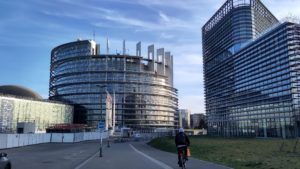
The European Parliament in Strasbourg
This system is not legally binding and additionally, funding for the Bern Convention Secretariat has shrunk by 85% in the last 25 years, something that the International NGO Committee chaired by EUROPARC, has been trying to draw attention to through a letter to the Secretary General to the Council of Europe.
Nevertheless, there is hope for more action in the environmental space. Iceland currently has the presidency of the Council of Europe and one of their top priorities is Climate Change. Additionally, in May there will be the Summit to discuss the future direction of the Council, which is an important occasion as these summits are only held every 20 years. EUROPARC will continue to work with and through the Council of Europe, its conventions, the INGO Conference and the ECCH&H Committee to develop an integrated approach between human rights, environment, heritage and health.